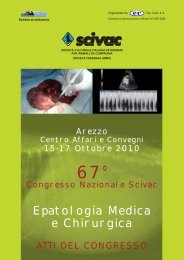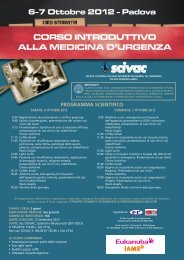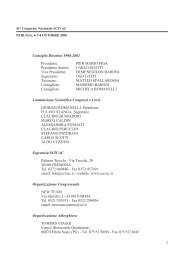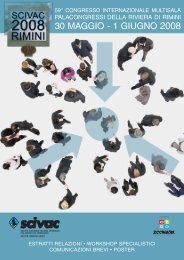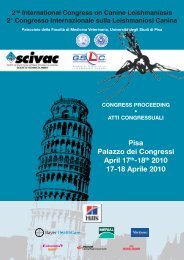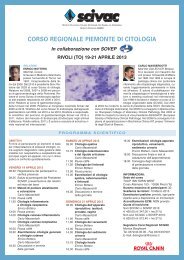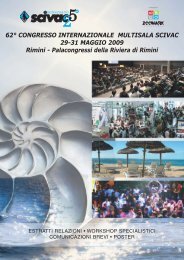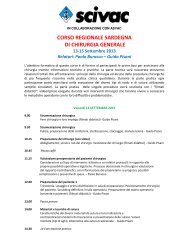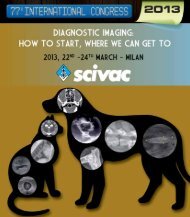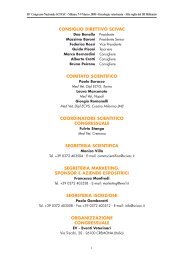68° Congresso Nazionale SCIVAC: Le domande più frequenti in ...
68° Congresso Nazionale SCIVAC: Le domande più frequenti in ...
68° Congresso Nazionale SCIVAC: Le domande più frequenti in ...
Create successful ePaper yourself
Turn your PDF publications into a flip-book with our unique Google optimized e-Paper software.
<strong>68°</strong> CONGRESSO NAZIONALE <strong>SCIVAC</strong> 11-13 Marzo 2011 - Milano<br />
LE DOMANDE PIÙ FREQUENTI IN RIPRODUZIONE CANINA E FELINA<br />
Tutto quello che i vostri clienti osano spesso chiedere e a cui voi non sapete rispondere<br />
14 th EVSSAR Congress - Advances <strong>in</strong> Fel<strong>in</strong>e Reproduction - March 11 th 2011<br />
In case of shock or moderate to severe dehydration 30-40 ml/kg of isotonic<br />
crystaloids can be given as a bolus over 5-10 m<strong>in</strong>utes. After stabiliz<strong>in</strong>g the<br />
patient, the ma<strong>in</strong>tenance dose is 6 ml/kg/h. To this, 50% of the deficit is added<br />
over 6 hours.<br />
HYPOXIA<br />
Hypoxia is not easily recognized cl<strong>in</strong>ically because puppies and kittens<br />
tend not to hyperventilate until they are several days old. After bith, respiratory<br />
and metabolic acidosis has been shown to be normal. Treatment should<br />
be considered if acidosis lasts longer than 3 hours. Hypoxia causes serious<br />
stress that can lead to complications such as depression, translocation of <strong>in</strong>test<strong>in</strong>al<br />
bacteria and chill<strong>in</strong>g, result<strong>in</strong>g <strong>in</strong> decreased resistance to bacteria. The<br />
treatment consists of oxygen supplementation provided by <strong>in</strong>cubator. Care<br />
must be taken to prevent 100% oxygen from com<strong>in</strong>g <strong>in</strong> direct contact with the<br />
eyes if they are open, because this may cause ret<strong>in</strong>al detachment.<br />
Congenital anomalies<br />
We will briefly detail different common anomalies: pectum excvatum,<br />
anal agenesia, conjunctivitis, ...<br />
3. WHAT TO DO AFTER A CESAREAN SECTION<br />
OR WITH A NON MATERNAL BITCH?<br />
Puppies are released <strong>in</strong> a few m<strong>in</strong>utes, so it is essential that the necessary<br />
equipment is available and to provide several persons for their immediate “recovery”.<br />
Car<strong>in</strong>g for puppies should be done <strong>in</strong> a strict chronological order:<br />
- Vacuum the mucous (amniotic liquid) from the respiratory tract (mouth,<br />
nose and larynx) by us<strong>in</strong>g a baby fly (pear, ...) keep<strong>in</strong>g the puppy on his<br />
stomach head slightly tilted downwards.<br />
- Rub the puppy vigourously (paper towel, clean fields ...) to dry (to limit hypothermia)<br />
and stimulate breath<strong>in</strong>g (presence of cutaneous mechanoreceptors).<br />
The puppy must be stimulated until it is observed an effective spontaneous<br />
respiration. In case of <strong>in</strong>sufficient breath<strong>in</strong>g movements (fe-<br />
85



